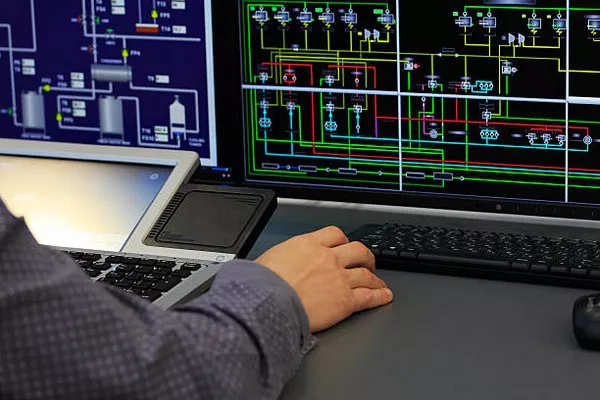In today’s technologically advanced world, electrical equipment is ubiquitous across various industries and daily life. From offices to homes, factories to data centers, electrical devices power our activities. However, this widespread use of electricity also presents a potential fire hazard. To mitigate the risks associated with electrical fires, it is crucial to understand the appropriate fire extinguishers for use on electrical equipment.
The Nature of Electrical Fires
Electrical fires differ significantly from other types of fires. They originate due to faults in electrical systems, such as short circuits, overloaded circuits, or damaged wiring. These fires burn without a visible flame, as the heat generated causes the electrical insulation and components to smolder and eventually ignite. Water-based extinguishers, commonly effective against traditional fires, should never be used on electrical fires. This is because water conducts electricity and can lead to electrocution or exacerbate the fire.
The Importance of Choosing the Right Fire Extinguisher
Selecting the appropriate fire extinguisher is crucial to effectively and safely combat electrical fires. Using the wrong type of extinguisher can result in serious injury, equipment damage, or an increased risk of fire spread. There are several types of fire extinguishers available, each designed for specific classes of fires. For electrical fires, Class C fire extinguishers are the suitable choice.
Class C Fire Extinguishers
Class C fire extinguishers are specifically designed to combat fires involving live electrical equipment. They contain non-conductive extinguishing agents that do not conduct electricity, ensuring the safety of the user while effectively extinguishing the fire. These extinguishers are often filled with dry chemical agents like sodium bicarbonate or potassium bicarbonate, which work by interrupting the chemical reaction that sustains the fire.
Understanding Dry Chemical Fire Extinguishers
Dry chemical fire extinguishers are widely used for electrical fire suppression due to their effectiveness and versatility. These extinguishers are available in different variations, including monoammonium phosphate, sodium bicarbonate, and potassium bicarbonate. They are safe to use on Class A, B, and C fires, making them a valuable tool in various environments.
1. Monoammonium Phosphate
Monoammonium phosphate fire extinguishers are multipurpose units suitable for tackling Class A, B, and C fires. The extinguishing agent forms a barrier that suffocates the fire and prevents re-ignition. However, the residue left after extinguishing can be corrosive, potentially damaging sensitive equipment.
2. Sodium Bicarbonate
Sodium bicarbonate extinguishers are effective against Class B and C fires. The extinguishing agent releases carbon dioxide upon contact with the fire, smothering it by displacing oxygen. Sodium bicarbonate extinguishers are relatively safe for electrical equipment, but the fine powder they emit can be messy and may interfere with delicate electronics.
3. Potassium Bicarbonate
Potassium bicarbonate extinguishers are similar to sodium bicarbonate extinguishers but are considered more effective against Class B fires. They release a cloud of gas that blankets the fire, cooling it and inhibiting the combustion process. Like sodium bicarbonate, the residue can be a concern in sensitive electronic environments.
Safe Usage and Best Practices
When using a Class C fire extinguisher on electrical equipment, it is essential to follow these best practices to ensure both your safety and the effectiveness of the extinguisher:
1.Turn Off Power: Before attempting to extinguish the fire, always turn off the power source to the electrical equipment. This minimizes the risk of electric shock and prevents the fire from intensifying due to continued electrical flow.
2. Maintain Safe Distance: Keep a safe distance from the fire while using the extinguisher. Stand at a distance where you can effectively aim the extinguisher’s discharge at the base of the fire.
3. Sweeping Motion: Use a sweeping motion while discharging the extinguisher. Aim at the base of the fire, moving the nozzle from side to side. This motion helps distribute the extinguishing agent evenly and effectively.
4. Evacuation Plan: If the fire is not manageable or continues to spread, prioritize safety and evacuate the area. Contact emergency services and ensure that everyone is clear of the hazardous area.
5. Post-Fire Inspection: After the fire is extinguished, perform a thorough inspection of the equipment. Check for any signs of damage or re-ignition. It is advisable to have a professional assess the equipment’s safety before restoring power.
Conclusion
Electrical fires pose a unique challenge, requiring specialized fire extinguishing agents to ensure effective suppression without risking further harm. Class C fire extinguishers, particularly those containing dry chemical agents like sodium bicarbonate or potassium bicarbonate, are the preferred choice for combating electrical fires. Understanding the nature of these fires and adhering to safe usage practices are paramount to minimizing damage, injury, and the potential for fire spread. When equipped with the right knowledge and tools, individuals can confidently and safely address electrical fires, safeguarding both their surroundings and themselves from harm.

